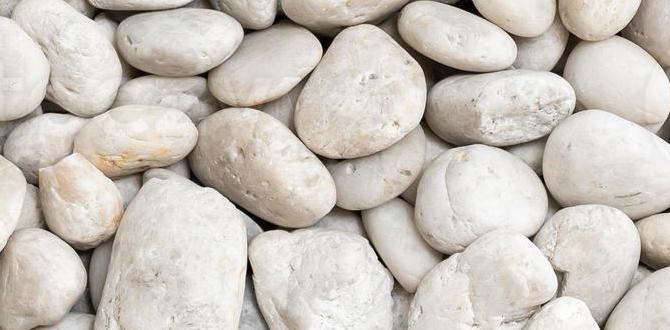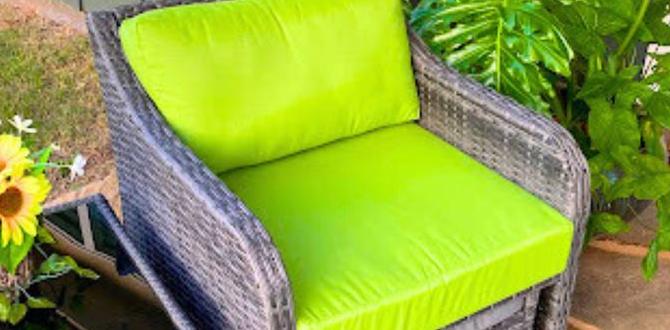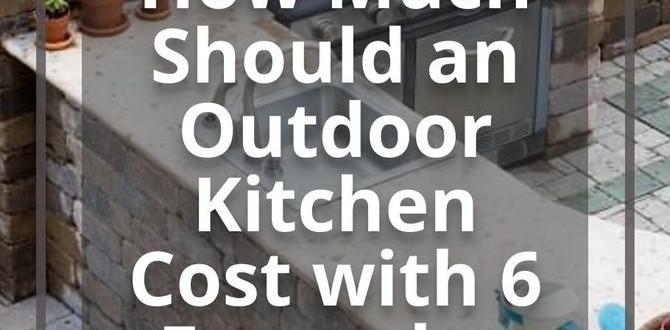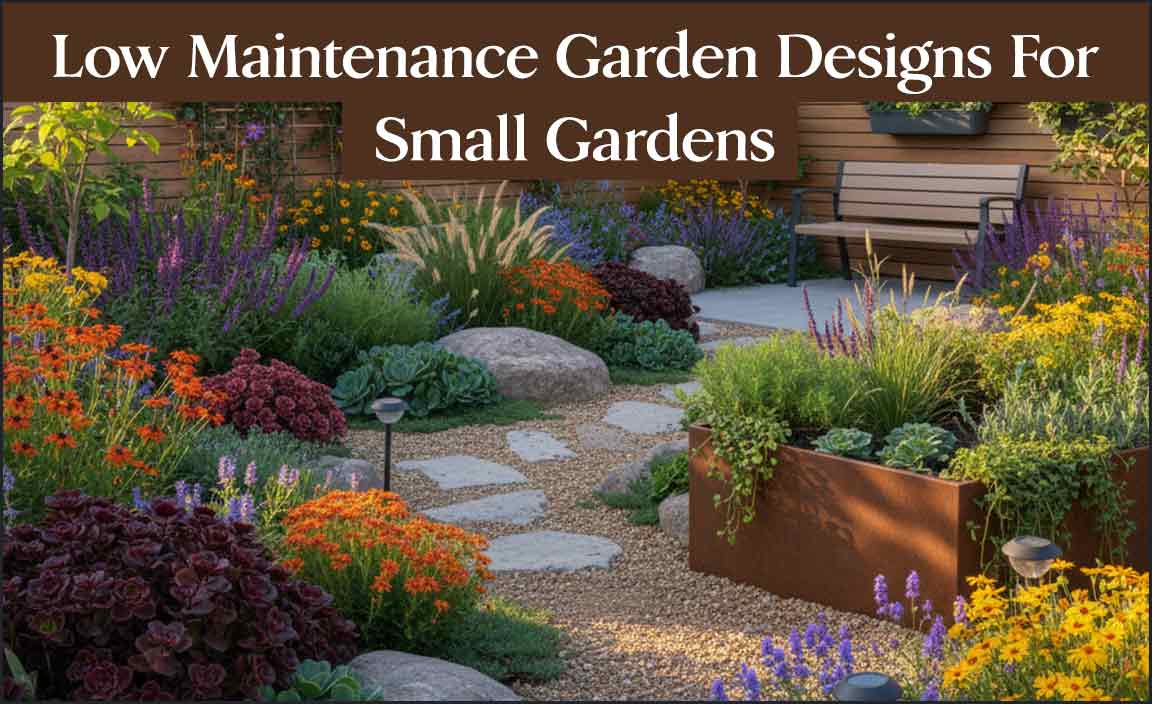
Low Maintenance Garden Designs For Small Gardens: Ideas And Tips
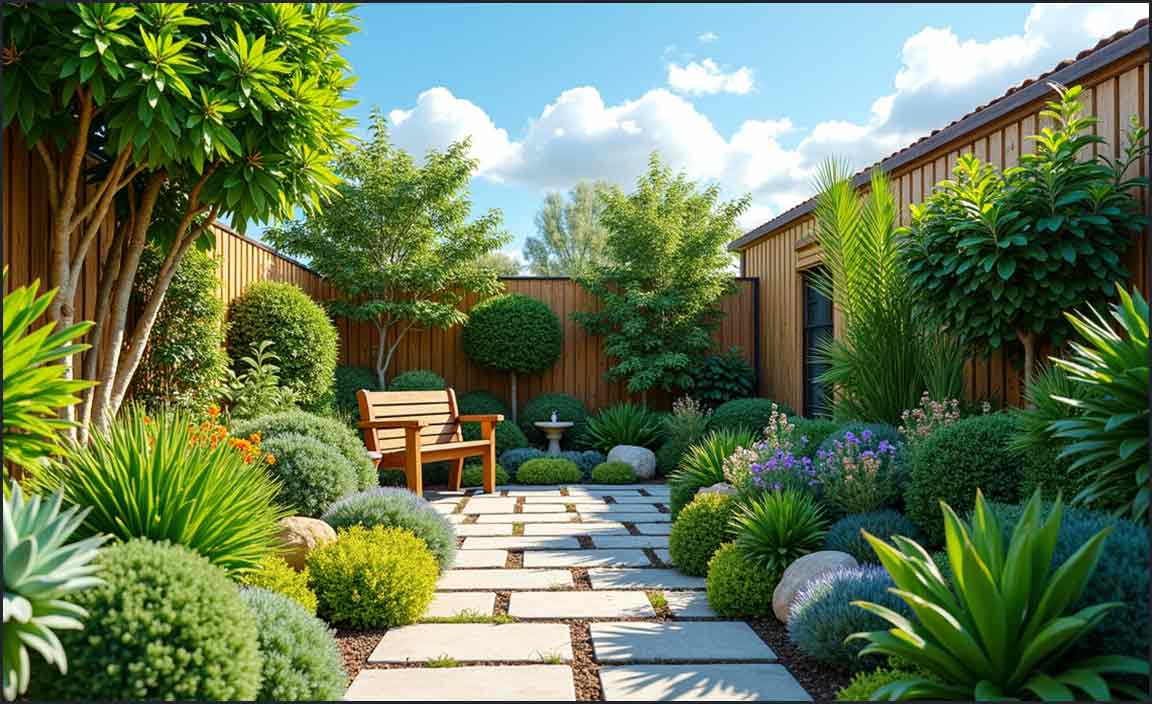
Understanding Low Maintenance Gardens
Definition and characteristics of low maintenance gardens. Benefits of choosing a low maintenance design in small spaces. Many people love low maintenance gardens. These gardens have plants that need less care, like watering and trimming. They are perfect for small spaces.
Low maintenance gardens allow you to enjoy beauty without hard work. They save time and money, making gardening easy and fun.
- Fewer plants mean less work.
- They often use local plants that grow well.
- Less lawn means less mowing!
Creating a simple garden can bring joy with less effort, letting you enjoy your space more.
What are the benefits of low maintenance garden designs?
Choosing a low maintenance design means more free time and less worry. It keeps your garden beautiful with little work.
Design Principles for Small Gardens
Key design principles to consider for maximizing space. Importance of functionality and aesthetics in a small garden.
Creating a small garden can be fun and easy with the right design principles. Focus on these key ideas to make the most of your space:
- Maximize Vertical Space: Use trellises or hanging plants.
- Choose Multi-Functional Items: Select benches that offer storage.
- Layer Plants: Mix tall and small plants for depth.
Always think about how the garden looks and how it works. A cozy, pretty garden can be your outdoor escape. Remember, a garden should be both beautiful and useful!
What makes a small garden functional?
A small garden is functional when it has clearly defined areas for activities and plants. Make sure paths are easy to walk on and that you can comfortably reach all parts of your garden.
Choosing the Right Plants
Best low maintenance plants for small gardens. Tips for selecting native and droughtresistant species. Picking the right plants can make your small garden look great without a lot of work. Some excellent choices are:
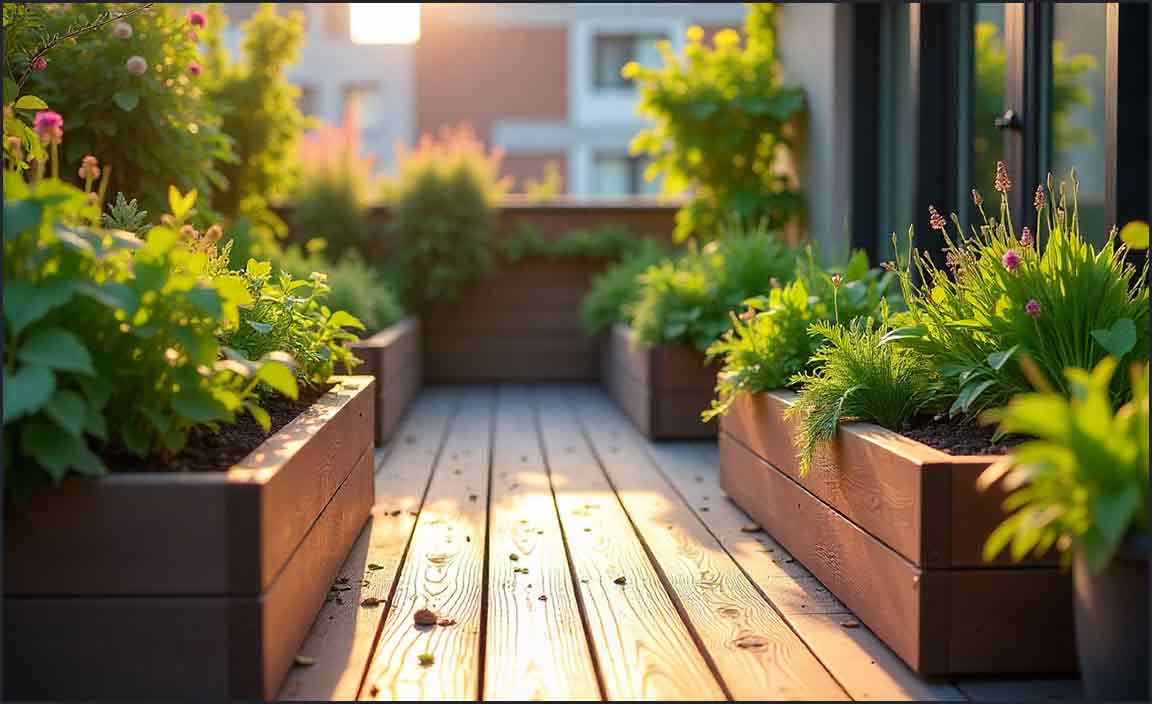
- Lavender – It smells amazing and attracts bees!
- Sedum – This succulent needs very little water.
- Daylilies – They bloom beautifully and come in many colors.
Choose native plants as they adapt well to your area. They help local wildlife too! Also, look for drought-resistant types. These plants survive on less water, making them perfect for small gardens.
What are the best low maintenance plants for small gardens?
Some top choices are lavender, sedum, and daylilies. These plants need less care and are beautiful.
Incorporating Hardscaping Elements
Types of hardscaping materials suitable for small gardens. Ideas for pathways, patios, and seating areas in low maintenance designs. Hardscaping can make small gardens beautiful and easy to care for. Popular materials include pavers, gravel, and natural stone. These materials help create neat designs with less work. You can use them for:
- Pathways: Create charming routes through your garden.
- Patios: Enjoy outdoor meals and relaxation.
- Seating areas: Add comfortable spots to sit and unwind.
These designs save time while enhancing beauty. A well-planned layout with hardscaping can transform a small outdoor space into a delightful retreat.
What are the best materials for hardscaping in small gardens?
Common options are pavers, gravel, and stone. They offer durability and style without much effort.
Using Containers and Vertical Gardening
Advantages of container gardening in small spaces. How to implement vertical gardening techniques for spacesaving. Using containers is like having your own little garden army. They can fit anywhere—a balcony, a windowsill, or even a tabletop!
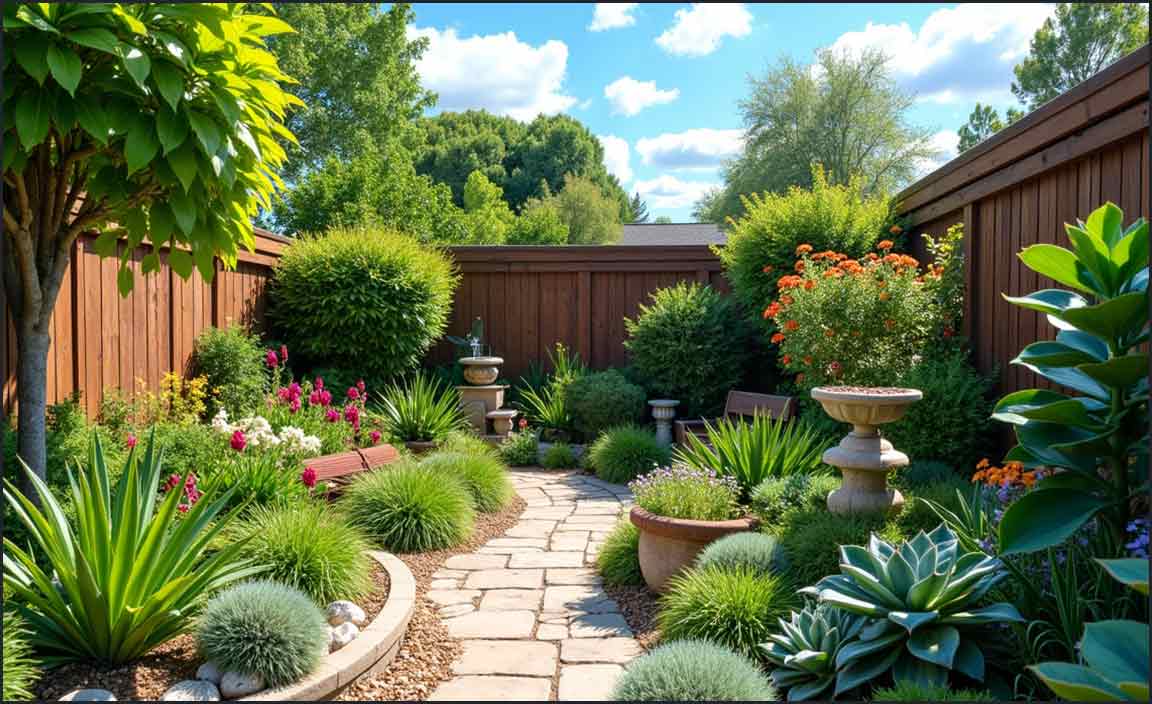
Container gardening makes it easy to move plants around and find the best sunlight. Plus, you can pick your favorite colors and styles, creating a visual feast. Vertical gardening is a game-changer too! Hanging planters or wall-mounted pots save space like a magician pulling rabbits from a hat.
| Technique | Advantage |
|---|---|
| Container Gardening | Easy to move and stylish. |
| Vertical Gardening | Saves floor space and adds drama. |
Mixing both methods can turn any small area into a green wonderland without much fuss. Say goodbye to boring yards and hello to your miniature paradise!
Water Features and Irrigation Solutions
Ideas for low maintenance water features. Efficient irrigation systems that reduce upkeep. Small gardens can still enjoy the charm of water features without a lot of fuss. Consider a mini pond or a small fountain. These add beauty while staying low maintenance. Use solar-powered options to save on energy bills and avoid messy wires! For watering, think about an efficient irrigation system like drip irrigation. This system delivers water right to the plants. Less work, more time for fun!
| Water Feature | Maintenance Level |
|---|---|
| Mini Pond | Low |
| Solar Fountain | Very Low |
| Drip Irrigation | Low |
Seasonal Care Tips
Minimal maintenance tasks throughout the seasons. Scheduling and planning for garden upkeep. Keeping your garden healthy requires some easy tasks throughout the year. In spring, plant your flowers and trim any hedges. Summer is all about watering and weeding—think of it as giving your garden a refreshing drink! In fall, collect the leaves and prepare for winter. Winter gardening? Not much needed; just dream about your spring blooms.
Planning makes everything easier! Here’s a simple schedule:
| Season | Task |
|---|---|
| Spring | Plant new flowers and trim hedges |
| Summer | Water plants and weed |
| Fall | Rake leaves and prep for winter |
| Winter | Relax and plan for spring |
With this schedule, your low maintenance garden will thrive with minimal fuss. It’s like a game of tag: you’re “it” for just a bit each season. Easy peasy!
Eco-Friendly Practices for Low Maintenance Gardens
Sustainable gardening techniques to incorporate. Reducing water usage and enhancing soil health. Many ways can help make a garden green and easy to care for. Using sustainable gardening techniques will not only save time but also protect our planet. Here are some tips:
- Grow native plants. They need less water and care.
- Add mulch. It reduces water loss and keeps weeds down.
- Collect rainwater. This helps to water plants naturally.
- Test soil health. Healthy soil means better plants.
These practices lower water use and boost soil health, making a beautiful garden with less work. A stunning garden can be friendly to nature too!
What are simple eco-friendly practices for gardens?
Planting native species and using rainwater are effective ways to maintain a garden.
Examples of Successful Low Maintenance Small Gardens
Case studies of welldesigned low maintenance small gardens. Visual inspiration and layout ideas for readers. Small gardens can shine with clever design! One example features stone paths surrounded by hardy plants. These plants need little care and stay vibrant.
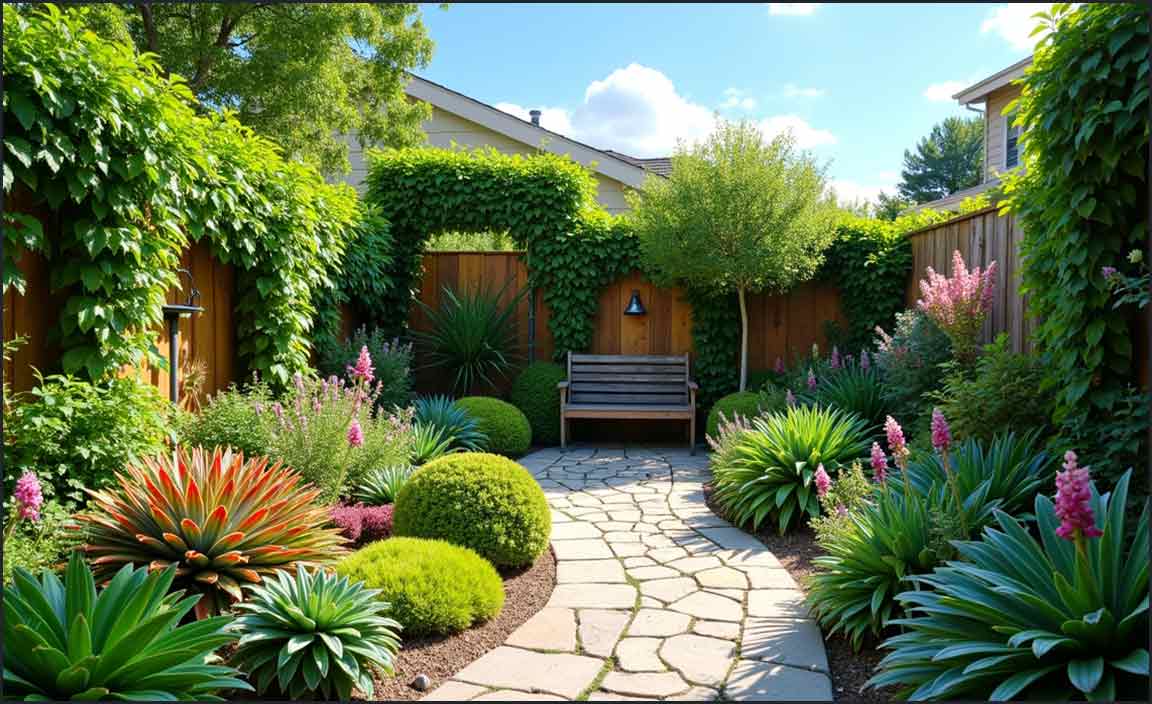
Another idea is using planters filled with colorful flowers. The planters can be moved around for fun looks! You can spruce up corners with a cozy bench for relaxation or a small pond for added charm. Here’s a quick table of ideas:
| Design Element | Description |
|---|---|
| Stone Paths | Easy to maintain and guide visitors through the garden. |
| Hardy Plants | Require less water and upkeep—more time for you! |
| Planters | Mobile flowers add fun and can be rearranged. |
| Cozy Seating | Perfect for enjoying the beauty of the little space. |
Remember, a little creativity can make a small garden feel grand! So grab those garden gloves and get to work—your mini paradise awaits!
Conclusion
In summary, creating a low maintenance garden in a small space is easy and fun. Choose the right plants that need little care, like succulents or perennials. Use mulch to retain moisture and reduce weeds. By following these tips, you can enjoy a beautiful garden without much work. Start planning your garden today, and explore more ideas online!
FAQs
Sure! Here Are Five Related Questions On Low Maintenance Garden Designs For Small Gardens:
Sure! Here are five questions that can help you design a low maintenance garden in a small space. 1. What plants should I choose for a small garden? 2. How can I make my garden look nice without too much work? 3. Are there easy ways to keep weeds away? 4. How can I use rocks or stones in my garden? 5. What should I do to water my plants less often?
Sure! Please provide the question you’d like me to answer.
What Are Some Of The Best Low Maintenance Plants For Small Gardens?
Some great low maintenance plants for small gardens are succulents, lavender, and ferns. Succulents like aloe and jade can survive with little water. Lavender smells nice and attracts butterflies. Ferns grow well in shady spots and don’t need much care. These plants can make your garden look pretty without a lot of work!
How Can I Design A Small Garden To Minimize Upkeep While Maximizing Aesthetics?
To design a small garden that looks great and is easy to care for, choose plants that need less water. You can pick flowers and shrubs that grow well together and don’t need much trimming. Use stones or mulch where there isn’t grass to reduce weeds. Make paths with bricks or tiles to create nice walking areas. Finally, remember to put in a few decorations, like garden gnomes or pretty pots, for extra charm!
What Are Effective Ground Cover Options For A Low Maintenance Garden?
For a low maintenance garden, you can choose ground covers like clover, creeping thyme, and sedum. Clover is soft and green, and it helps keep weeds away. Creeping thyme smells nice and can attract butterflies. Sedum grows well in sunny spots and needs very little water. These plants are easy to take care of and look great!
How Can I Incorporate Hardscaping Elements To Reduce Maintenance In A Small Garden?
You can add paths made of stones or bricks to your garden. This helps keep mud off your shoes and makes it easier to walk. You can also use gravel or mulch in flower beds. This stops weeds from growing and makes it look nice. Finally, you can build a stone wall or a raised bed to keep plants organized and reduce work.
What Innovative Gardening Techniques Can Help Maintain A Small Garden With Minimal Effort?
You can try using raised beds. They make planting easier and need less weeding. Another fun idea is to plant herbs in pots. They grow well and are handy for cooking. Adding mulch helps keep the soil moist and stops weeds from growing. Lastly, using drip irrigation lets you water plants slowly and saves time.

